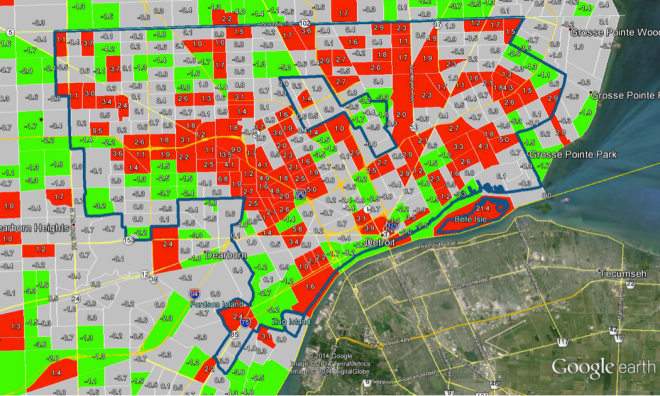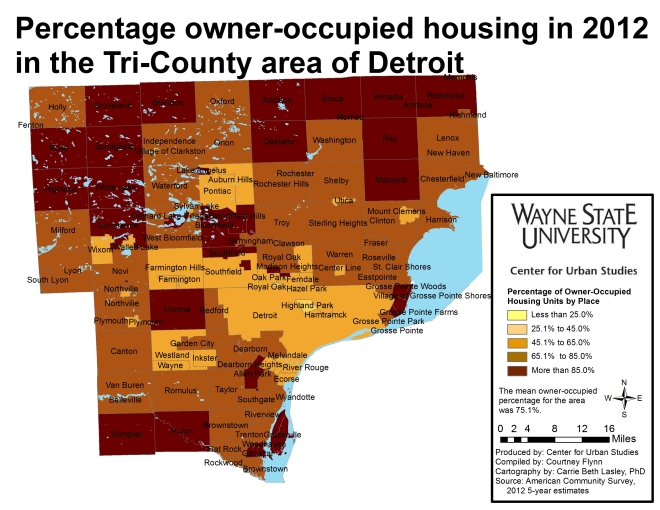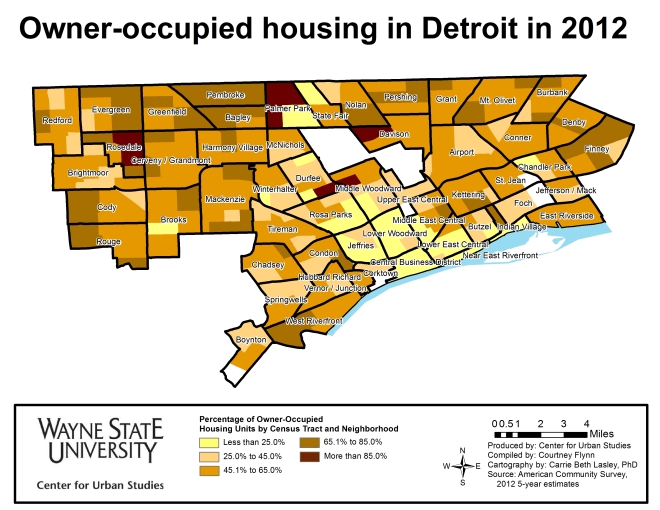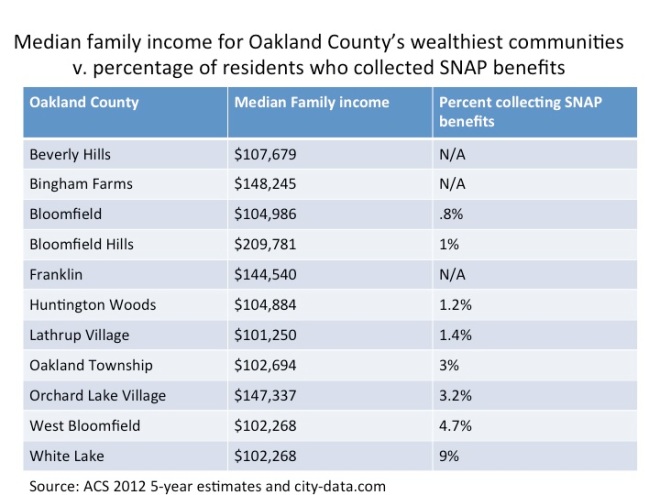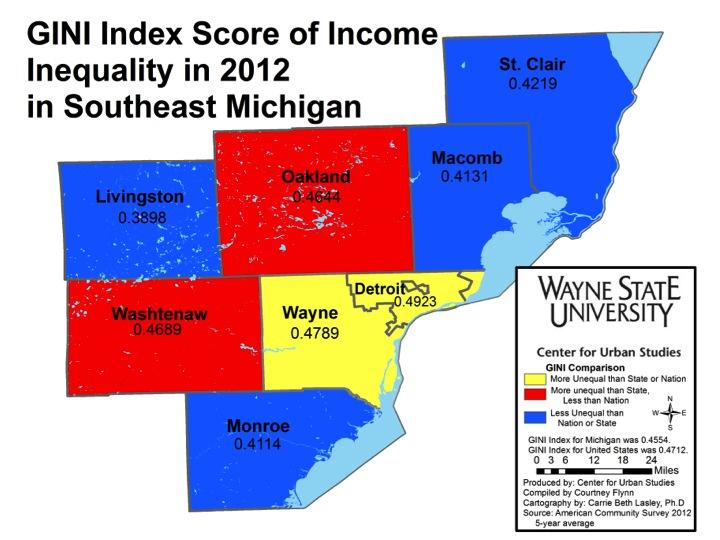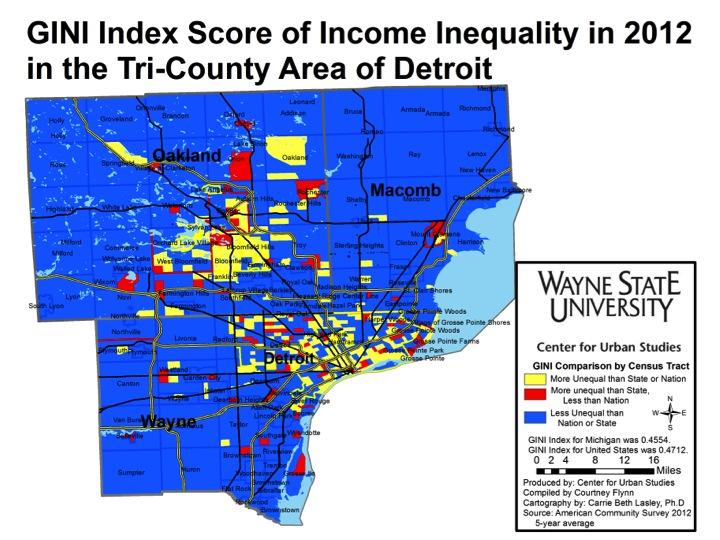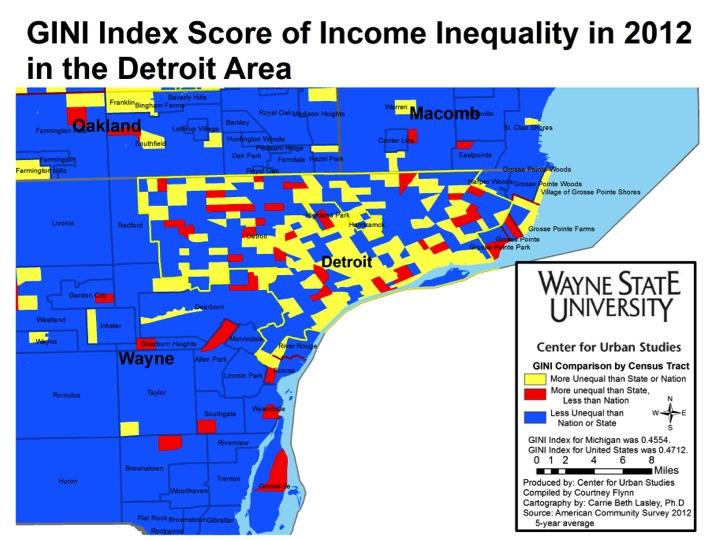According to a recent Detroit News article, Detroit Mayor Mike Duggan’s home auction program launched in 2014 looked successful on the outside. Of the about 400 abandoned homes up for auction, 394 were bid on and appeared to be being transferred to new owners. However, of those 394 supposed-to-be-new homeowners only about a third were able to close on the homes. Additionally, 37 of the closings were delayed and dozens fell through. In total, according to numbers provided by the Detroit Land Bank, 138 properties were closed on. To read more click here.
Category Archives: Standard of Living
NYT: Lower wage earners hit the hardest by local, state taxes
An article recently released by the New York Times shed light on a study produced by the Institute of Taxation and Economic Policy that shows how lower wage earners pay a large percentage of their income in local and state taxes than the middle fifth and 1 percent of Americans.
In Michigan, according to the study, the share of a family income of non-elderly taxpayers paid in state and local taxes was 5.1 percent. The lowest 20 percent paid 9.2 percent of their family income in state and local taxes, the second lowest 20 percent paid 9.4 and the middle lowest paid 9.2 percent. To learn more about who pays what in state and local taxes in Michigan click here. For the whole report click here.
Number of vacant addresses in Detroit slightly decline
The most recent (September 2014) quarterly statistics from the U.S. Postal Service show a slight decline in the total number of vacant addresses in the city of Detroit. The total number of vacant addresses (both residential and commercial) declined by 62 from 89,542 to 89,480 for the period July 2014 to September 2014. The total number of residential addresses declined by 455 from 362,342 to 361,887 likely reflecting ongoing demolition activity during the quarter. The total vacancy rate remained unchanged at 22 percent.
Best Performing Neighborhoods in Detroit (Green): Wayne State, West Canfield, Art/Cultural Center, Atkinson/Euclid. Lafayette Park, East Riverfront, Grandale, Cody, Rouge Park, University District, Rosedale Park, Palmer Park, Morang/Moross (St Johns Hospital area), Castle Rouge, Woodmere, Islandview
Worst Performing Neighborhoods in Detroit (Red): Tireman, Barton-McFarlane, Plymouth-Hubbell, Brightmoor, Schoolcraft, Mexicantown, Oakwood Heights, Denby (south of Morang), East Warren, Pershing, Kranz Woods, State Fair-Nolan
Highland Park has lowest percent of owner occupied housing
According to the Census Bureau, a housing unit is owner-occupied if the owner or co-owner lives in the unit, even if it is mortgaged or not fully paid for. In the seven county Southeastern Michigan region in 2012, the mean owner-occupied percentage was 74.1 percent. At that time, the counties in the region with a percentage of owner occupied homes above the region’s total average were: Livingston, Macomb, Monroe and St. Clair counties. Livingston County had the highest percentage at 85.9 percent; this was also the only county where the percentage of owner-occupied homes was above 80 percent.
In the seven county region, Washtenaw County, which is home to the University of Michigan, had the lowest percentage of owner-occupied homes. Uof M is the largest university in the region, enrolling about 47,000 students on an annual basis. With such a large student population, it can be argued that this contributes to the city of Ann Arbor’s low owner-occupied percentage, which was 45.5 percent in 2012. Also located in Washtenaw County is the charter township of Ypsilanti, which houses Eastern Michigan University and has a lower income population residing within the township. Both these attributes likely play a role in the owner occupied housing percentage of 58.9 percent in Ypsilanti.
Wayne County had the second lowest percentage at 65.6 percent.
The above map shows the percentage of owner-occupied housing in the tri-county region in 2012. The lower income communities, such as Detroit and the cities of Mount Clemens and Pontiac, were below the regional mean for owner occupied percentage. In contrast, the wealthier communities (like Grosse Ile, Livonia and the Grosse Pointes) and the more rural communities (like the northern half of Macomb County and the southwest portion of Wayne County) have a much higher percentage of owner occupied housing.
To see the median income of communities throughout the Southeast Michigan click here.
Note that in the downtown area of Detroit, primarily along Woodward Avenue, there is a very low owner occupied housing percentage, below 25 percent. This is because there are dozens of rental housing units along, and in the vicinity of Woodward Avenue, in which owners of the units are more likely to lease out the properties. In the far north of the city, near Palmer Park, an area where the owner occupied housing percentage is below 25 percent appears to be mainly the actual park and cemetery.
How many structures in Detroit are blighted and ready for demolition?
Detroit has embarked on one of the largest scattered site demolition projects in the world. This task is reflective of the city’s vacancy rate, which is considered one the highest in the nation (Kolko, 2013). Property values are still on the decline in Detroit, as can be seen by a more than 10 percent decrease in the city’s state equalized value (SEV) in the past year (Liu, 2014). Property values are very sensitive to such vacancies, impacting the potential for revenue generation in a city just emerging from bankruptcy. Thus, the blight demolition projects have taken center stage as the city tries to revitalize itself. Here we take a closer look at the various sources of statistics that show discrepancies in just how many structures are considered blighted and ready for demolition. We consider the policies surrounding this issue.
The first step to determining how many, and which, houses to tear down includes a complete inventory of the residential structures within the city, including an analysis of how many of those are vacant. For those structures that are determined vacant, it must then be determined how many are in such a state of disrepair and decay that they are unlikely to attract interest from someone willing to renovate and move in.
There are stark differences in the extimates of the number of vacant homes. Data Driven Detroit’s Motor City Mapping project (www.motorcitymapping.com), deployed over 100 data collectors throughout the city to survey every city lot and to rate the condition of the remaining structures including vacancy and fire damage. They identified 261,275 total structures in Detroit in 2013, and identified 48,327 as unoccupied, for a vacancy rate of 18.5 percent.[i] In 2012, which is the most recent data, the American Community Survey for the U.S. Census Bureau, estimated in its 5-year estimates that 104,143 of 363,010 housing units (not just structures) were vacant, for a rate of 28.7 percent. The Blight Removal Task Force, which was formed by the Obama administration in 2013 to recommend a course to deal with the massive amount of blight in Detroit, estimated that Detroit had 78,506 vacant structures of 380,000 for a rate of 20.7 percent; this data was collected from December 2013 to January 2014. Additionally, the U.S. Postal Service recognized 87,731 vacant addresses out of 363,045 for a rate of 21.6 percent in December of 2013. Below is a table that summarizes these figures:
| Data Driven Detroit
(2013) |
Blight Removal Task Force
(2013) |
USPS
(2013) |
American Community Survey (5 yr estimate 2012) | Total Average | |
| Detroit Vacancy Rate
|
18.5 | 20.7 | 21.6 | 28.7 | 22.5 |
The estimates of the number of structures that should be removed is just as variable. The Motor City Mapping platform states that the need for two major repairs results in the structure as being deemed in “poor condition.” For a structure to be deemed for “suggested demolition” by Motor City Mapping it must “not appear to be structurally sound, may pose safety risks, and is generally uninhabitable. The building may be buckling, caved in, or otherwise severely compromised.” With this definition, Motor City Mapping determined 4,431 properties were rated for demolition, a rate of 1.7 percent of structures. In the same study, Motor City Mapping indicated that 6,873 structures, or 2.6 percent, had fire damage in 2013; 5,979 (2.3 percent) had become obvious dumping sites and that 27,640 (10.6 percent) structures needed boarding from intruders and the elements. By contrast, the Blight Removal Task Force recommended 40,777 structures for immediate removal, or 10.7 percent of the housing stock. The task force determines if a structure should be removed if it meets the definition of blight and where the estimated cost of rehabilitation (to code) will exceed market value or create positive economic opportunities for the neighborhood,” (Detroit Blight Removal Task Force Plan, pg.125). The Detroit Blight Task Force considers a property blighted if it is: a public and/or attractive nuisance; fire damaged or otherwise dangerous; has code violations posing a severe or immediate health or safety threat; is open to the elements and trespassing; is already on the city of Detroit’s demolition list; is owned or under the control of the land bank; has had utilities, plumbing, heating or sewage disconnected, destroyed, removed, or is otherwise ineffective; is a tax reverted property; has been vacant for five consecutive years and is not maintained to code (timetoendblight.com).
| Data Driven Detroit | Blight Removal Task Force | |
| Recommended for demolition in 2014 | 4,431 | 40,777 |
| Percent of housing stock | 1.7% | 10.7% |
According to the federal, state and city government, removing these structures is essential for “neighborhood stabilization” (City of Detroit Planning and Development Department 2011, Michigan Foreclosure Task Force 2013, U.S. Department of Housing and Urban Development 2010). Demolition of of several thousand homes will be completed through the use of $52.3 million in Hardest Hit Funding. These funds, allocated by the U.S. Treasury from the Troubled Assessed Relief Problems (TARP) funds for those states hardest hit by the mortgage foreclosure crisis, must be spent by April 30, 2015 or it will be lost (Detroit Building Authority 2014). An additional investment of approximately $250 million may be awarded toward the same goal in a short period. While each state helps to tailor the local allocation of Hardest Hit Funding, most communities in Michigan and other states have elected programs that help homeowners facing foreclosure to make payments while they look for work (U.S. Department of Treasury, 2013). Other uses of this funding, besides demolitions, include property auctions and loans for renovation. More information about these programs can be found at www.buildingdetroit.com.
While the decision-makers engaged in this process appear unified on the need to use demolition to spur redevelopment, these decisions are being made in an unstable urban environment. In the short run population is still in decline, having not yet reached its nadir. Nearly 120,000 residents have left Detroit since 2008 (U.S. Census Bureau 2014). As Detroit’s population dwindles homes likely will continue to be left vacant, as the number of people moving back to Detroit is unlikely to come close to equaling the number of those who have left.
High-profile urban institutes, including the Brookings Institute, have identified Detroit’s vacant homes as an economic handicap, citing the need for demolition to equalize supply and demand in the housing market and thus stabilize property values; to resolve expensive nuisance issues related to maintaining abandoned properties; and to reduce disincentives to revitalization (Mallach 2012). Other potential benefits of a demolition policy include removal of sites of criminal activity and removal of pests such as rats, roaches and stray animals (Detroit Blight Removal Task Force Plan 2014, Institute of Population Health 2014).
However there are major potential downsides to this massive program of demolition. The large-scale demolition in a small area of Detroit in a short time is likely to exacerbate health problems that may be unconcerning for a single demolition. This is the case according to the Blight Removal Task Force’s own plan as well as the Health Impact Assessment funded by the National Association of County and City Health Officials and the Centers for Disease Control and Prevention’s Health Initiative (Detroit Blight Removal Task Force Plan 2014, Institute of Population Health 2014). Lead and other heavy metals and toxic chemicals from the demolition will create toxic dust and aerosols that may impact neighbors by causing or triggering conditions such as lead poisoning or asthma. Lead can be ingested through dust and can also contaminate soil, especially around older buildings with flaking external paintwork, or near industrial buildings. The most prevalent risk from lead exposure is IQ deficiency in children – even with relatively low lead levels in blood, there are indications it negatively affects children’s IQ. The most vulnerable age group is children under 3 years old because of potential effects on neurological development, and because young children’s bodies more readily take up lead. Other risk groups include pregnant women and fetuses. For asthma, which is a chronic disease characterized by the swelling and narrowing of the airways to the lungs, it can be triggered by, dust, mold and volatile organic compounds (among other things), which have the potential to be emitted into the environment following demolitions. Those who experience symptoms of asthma often wheeze, have shortness of breath, a sensation of a tight chest, and cough.
In addition to the potential health risks related to mass demolitions, there is also no guarantee that if you demolish a structure, a new home will take its place. After the building has been removed, there are limited investment incentives currently in place to encourage investors to redevelop these vacant parcels, leaving the city pocked with large swaths of vacant and open land between homes in some areas. Aside from the Detroit Land Bank, where structures and vacant lands in the city are auctioned off, land will be city-owned, meaning maintenance of these vacant parcels will be the obligation of the city. This has caused problems historically for other cities, especially financially insecure cities like Detroit. After Hurricane Katrina, New Orleans and neighboring communities that lost significant tax bases encountered similar issues of having a substantial number of abandoned properties turned over to the municipality. The problem became how to redistribute this property to other agencies or investors to reduce the maintenance burden on a city incapable of significantly expanding its staff to meet the maintenance needs.
What would be an improvement is a strategy that reduces demolitions, while tightening the dust suppression by implementing protocols similar to those in Baltimore that call for increased deconstruction and the use of temporary barriers during demolition. This would cost more, but reduce the consequences for this generation of Detroit’s children.
In addition, more housing should be boarded so it could be rehabilitated as the city’s housing market improves. Third, housing rehabilitation should be targeted for neighborhoods that are already starting to improve as directed patrol, CompStat and other public safety interventions reduce crime and increase public safety. Within these targeted neighborhoods, home improvement would targeted around schools where safe routes have been established and educational improvement is underway. Together these measures are likely to produce an improving market as we are beginning to see in Midtown, North End, Corktown and along some stretches of East Jefferson.
[i] This is an on-going endeavor. Right now DDD is deploying data gatherers to update its data in several neighborhoods where change is particularly fast.
Rural counties in Southeastern Michigan have higher access to vehicles
With a weak public transportation system in Southeastern Michigan, access to a vehicle is critical for the commuting to and from work, school and other necessary places. In this post we examine the average number of vehicles residents in Southeastern Michigan residents have access to. The maps will show that at the county level the more rural counties have workers with more access to a vehicle, but at the census tract level it is the wealthier areas with a higher access number.
Data for this post was received from the 2012 American Community Survey. All workers age 16 and above in a household were considered when determining the average number of vehicles a worker has access to.
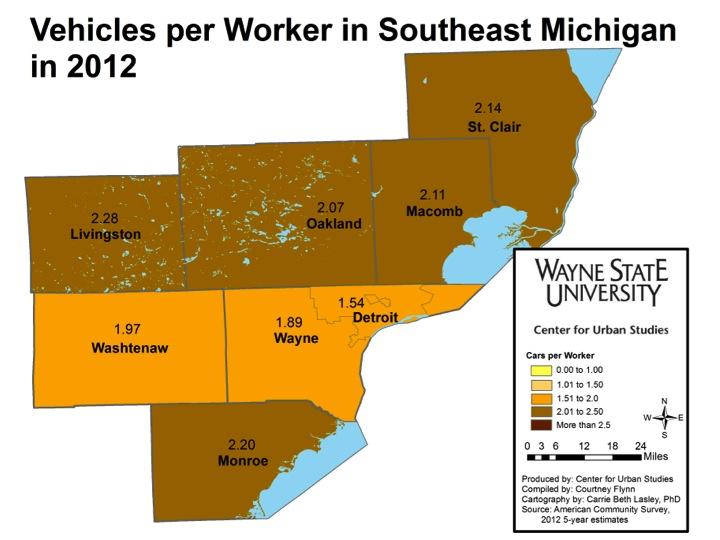
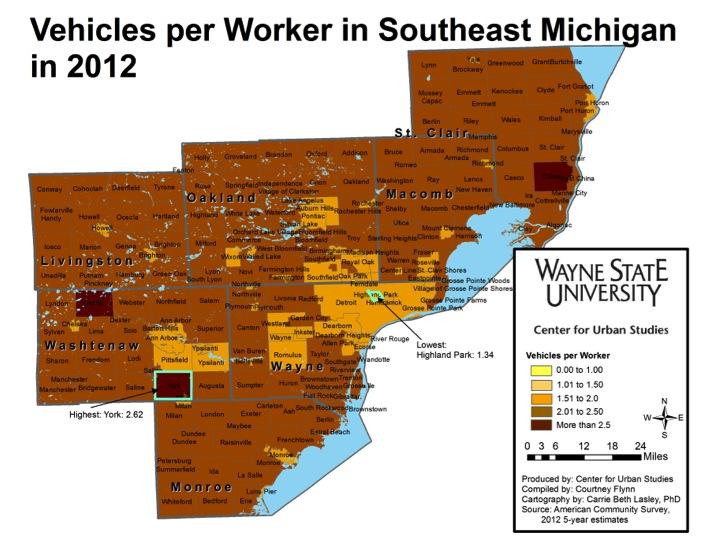
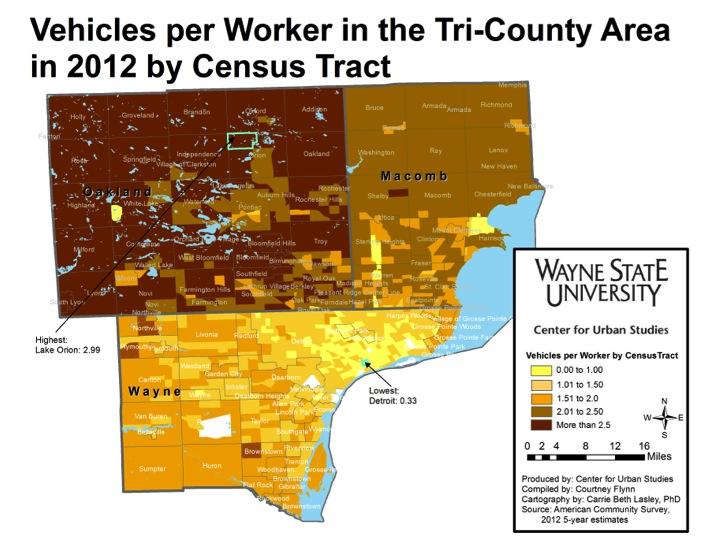
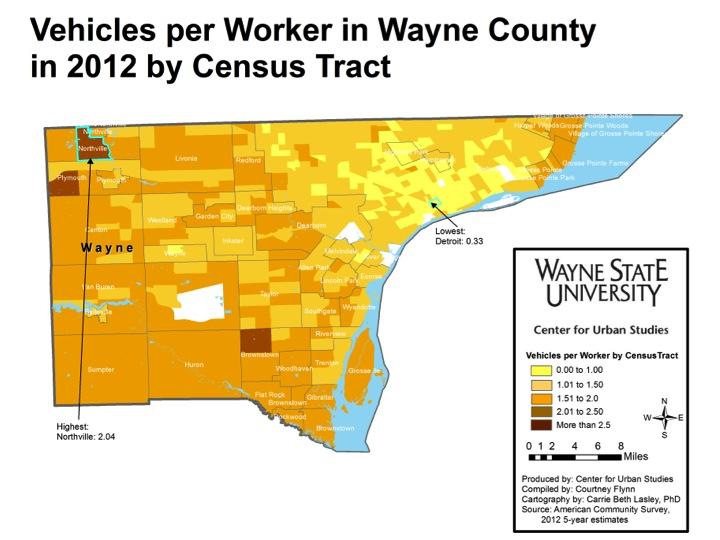
In 2012, in every county in the region, there was, on average, at least one vehicle or more per worker. When examined at the municipal level, even Detroit, where there was less than one car per worker in many census tracts, the average number of vehicles per worker was 1.54.
Livingston and Monroe counties, which are both rural, averaged access to the highest number of vehicles per worker in the region. Livingston County averaged access to 2.28 vehicles per worker in 2012 and Monroe County averaged access to slightly less, with 2.20. Wayne County had the lowest average access to vehicles per worker in the region. The average in 2012 was 1.89.
A closer look at the municipalities in the region shows that Highland Park had the lowest access average to the number of vehicles per worker in the region. This access number was 1.34 vehicles per worker. York Township in Washtenaw County averaged access to 2.62 vehicles per worker, making it the municipality with the highest average in the region.
When examining this data at the census level, there are clear differences between the counties in the tri-county area in terms of access to vehicles per worker. Overall, a majority of the census tracts in Oakland County, particularly those in the northern, western and eastern sides of the county, averaged access to more than 2.5 vehicles per worker. While the majority of census tracts in Macomb County had workers with access to over 2 vehicles per worker, only one, located in Shelby Township, had workers with access to 2.5 vehicles or more per worker. In Wayne County, there were no census tracts where workers had to access to, on average, more than 2.5 vehicles. However, one tract in Detroit had an average of 0.33 vehicles per worker. Viewing cars as a critical asset and a de facto necessity for getting work in a region where jobs are sprawled throughout the metropolitan area, these data clearly represent another dimension of the mal-distribution of resources across these seven counties.
Highland Park has highest percent of residents collecting SNAP benefits
The U.S. Department of Agriculture’s Supplemental Nutritional Assessment Program (SNAP) provides nutritional assistance to millions of people nationwide. In order to be eligible for SNAP benefits in the State of Michigan, the Department of Human Services examines an individual’s or family’s income, shelter expenses, medical expenses and assets.
In this post, we will examine the percent of residents in each municipality in southeast Michigan who received SNAP benefits in 2012.
There were 100 municipalities, out of 191, in the region where 8 percent of residents or less collected SNAP benefits in 2012. There were, however, eight municipalities where 32 percent or more of the population collected SNAP benefits.
According to the American Community Survey, in 2012, 48.1 percent of Highland Park residents, 44.4 percent of Hamtramck residents, 38.8 percent of Inkster residents, 37.7 percent of Detroit residents, 34.7 percent of River Rouge residents, and 33.7 percent of Ecorse residents collected SNAP benefits.
The other municipalities where more than 32 percent or more of the population collected SNAP benefits in 2012 were Pontiac and Rose Township, both in Oakland County. In Pontiac, 34.8 percent of the residents collected these benefits and in Rose Township 39.2 percent collected them.
The inner-ring suburbs of Detroit, such as Warren (25%) and the city of Dearborn (18.1%), had a higher percentage of residents collecting SNAP benefits in 2012 than outer-ring suburbs, like Royal Oak (5.5%) and Livonia (4.8%). The two municipalities throughout the region with the lowest percentage of residents collecting SNAP benefits were Webstertown in Washtenaw County and Grosse Pointe Farms in Wayne County; each had .7 percent of residents collecting such benefits.
As noted, one’s eligibility for SNAP benefits is partially based on income. In November of 2013, Drawing Detroit, published a post on median income for the region using data from 2009 and 2011. In 2009, the median income for Hamtramck was about $30,000 and the median income in Detroit was $33,754. In Oakland County though there were 11 communities where the average median income was above $100,000. An example is below, showing the 11 communities in Oakland County where the average household income is above $100,000 and the percentage of residents that collected SNAP benefits. Given this, it appears income is actually a larger factor when being considered for SNAP benefits.
Birmingham has highest rate of income inequality in Southeast Michigan
The GINI Index is a statistical representation of income equality that is measured between 0 and 1. The closer a place is to 1, the higher income inequality is; with 0 signifying that total income equality is 0 (for a more in-depth explanation on the GINI Index and its background please click here). Just because income inequality is high in one area does not mean its income levels are low, or high. Rather, it represents the disparities between any and all income levels in a certain place. In this post we compare the seven counties, along with the municipalities and Census Tracts in the region, to the state and national GINI Index. In 2012, the GINI Index in Michigan was .4554 and the nation’s was .4712.
Thus, the GINI Index measures differentials in income levels in some area. Therefore it may also provide useful perspective to examine the income levels in areas across the region. These are explained in an earlier blog post here.
Wayne County, which is home to the city of Detroit, had a GINI Index of .4789 which was higher than the index for both the state, at .4554, and nation, at .4712. This score, according to the World Bank, is comparable to nations like Kenya, Nigeria and Zimbabwe.
Oakland and Washtenaw Counties’ indices were above that of the state but lower than that of the nation at .4644 and .4689, respectively.
Livingston County had the lowest GINI Index in the region at .3898. On a national scale, this index is similar to those of Israel, Lithuania, Turkey and Thailand.
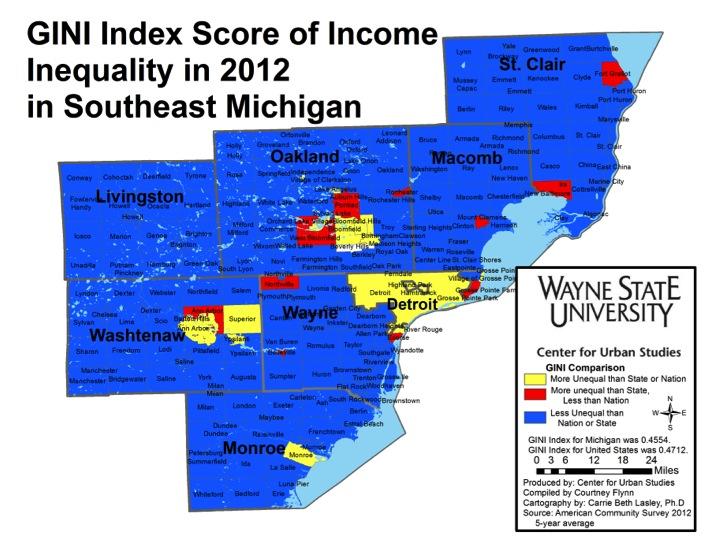
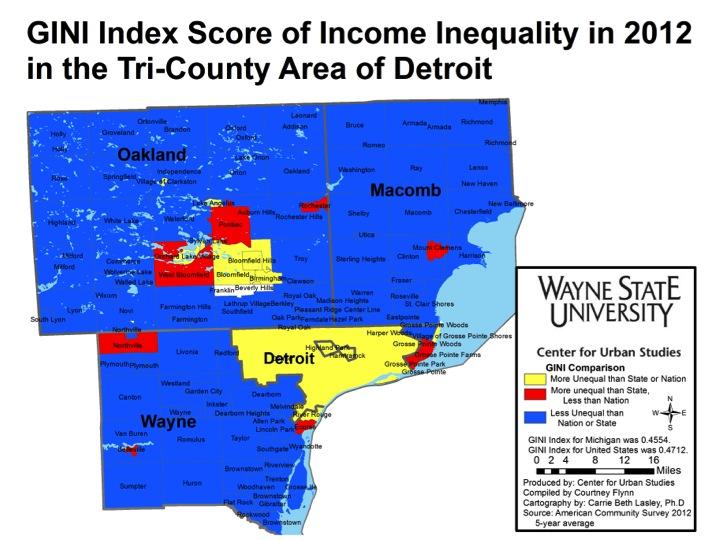
When looking at all the communities that make up the region, there were only a few with a GINI Index above (higher income differentials) that of the state and nation. In Wayne County, these communities were Detroit (.4923), Hamtramck (.474) and Highland Park (.4996). In Oakland County, these communities were Bloomfield (.5057), Bloomfield Hills (.5258), Orchard Lake Village (.5112) Birmingham (.5088). The four communities in Washtenaw County with a GINI Index above that of the state and nation were Ann Arbor (.4996), Barton Hills (.5002), Superior (.4905) and Ypsilanti (.4813). The only community in Monroe County with this characteristic was the township of Monroe (.4723).
Oakland and Washtenaw counties both had four communities with a GINI Index above national and state averages. All of the communities in Oakland County with such a characteristic had a GINI Index above .5; Birmingham had the highest index in the region. Such high GINI Index numbers in places like Birmingham and Bloomfield show that disparity is not isolated to just poor communities.
Again, the high GINI Indices of places like Birmingham and Bloomfield show that income inequality is not only prevalent in lower income areas. By clicking here, you can see what income levels are in cities a high or a low GINI Index. For example, in 2009 Birmingham’s median household income was about $96,000, the city of Monroe’s was about $45,000 and the city of Detroit’s was about $34,000.
When focusing in on Census tracts in the tri-county region, it becomes clear that there were more areas that had a GINI Index above that of the state and nation than the aggregated data indicates. The above map shows that higher rates of income inequality existed in some sections of a community, but not others. For example, the northwest portion of Oakland Township had a higher rate of income inequality than the aggregated data indicates. There were also several neighborhoods in Detroit where income inequality was below that of the state and nation. Areas with substantial income inequality in Detroit were found in the Downtown, Midtown and Riverfront areas.
Not only does income inequality exist in Detroit and the surrounding areas, but also across the country. In an article from The Atlantic, it’s described how the top 10 percent of America’s wealthiest residents earned more than half of the country’s income. This is particularly exemplified in places such as New York, L.A. and San Francisco. In 2012 there were more than 19 metro-areas with a GINI coefficient above .50.
SEMCOG: Property taxable values and state equalized values increase throughout region
According to information recently released by the Southeast Michigan Council of Governments, majority of the communities in the region have experienced an increase in their property tax values and state equalized values. In total, 207 communities gained SEV. To read more click here.
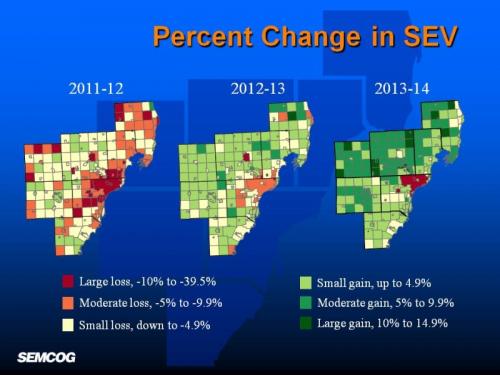
Detroit vacancies increase from September 2013 to March 2014
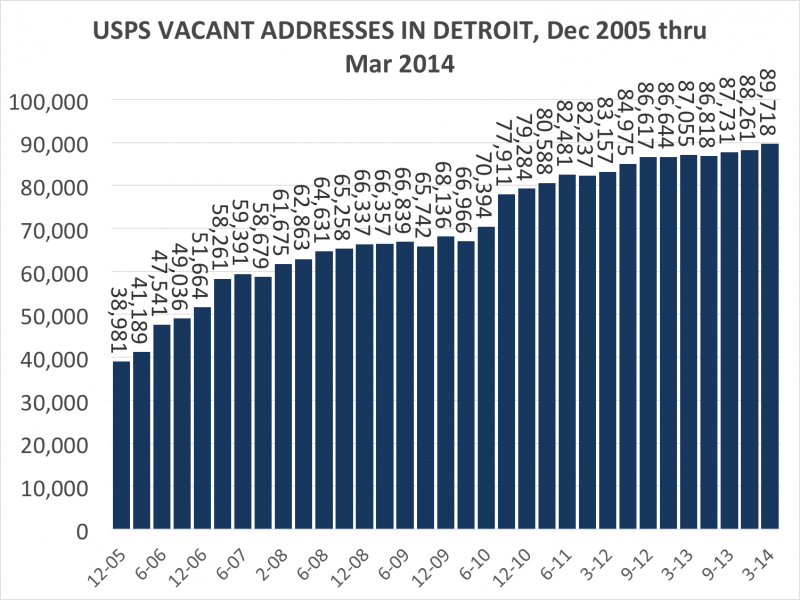
According to data provided by the US Postal Service, residential vacancies have increased by 1,502 from January 2014 to March 2014. From September 2013 to March 2014 vacancies increased by over 2,000. According to USPS, they determine that a residency is vacant if an occupant has not collected their mail for 90 days are more.
The Center for Urban Studies creates a data base with this information and it provides a more in-depth look at the vacancies. The USPS publicly releases the vacancy data on a quarterly basis; this is possible through an agreement with the U.S. Department of Housing and Urban Development.

